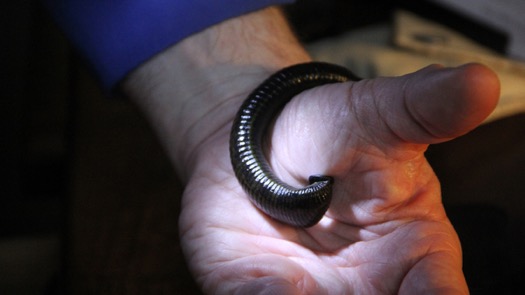Quick Guide to Leeches and How to Deal With Them
Leeches are found in many lakes, rivers, swamps and streams throughout North America. While the thought of getting bitten by one of these parasitic worms sends chills down the spines of many people, they are pretty much harmless. In fact, leeches have been used medicinally around the world for thousands of years. Let’s take a look at some basic information about common leeches as well as how you can safely remove them if they attach to your body.
Basic Information

Leeches can feed off of the blood of a wide-range of creatures, but humans are usually not their first choice. They attach to fish, reptiles, amphibians and other mammals by sinking their sharp teeth into the skin and drawing out their blood. Leeches start to become active during the spring and reproduce, and their activity increases over the course of the summer when water is warmer and food is more abundant.
Leeches do not eat that often. In fact, a leech can sometimes go a year or more without feeding on blood. However, they also exist in huge numbers in many waters that humans utilize. This is why getting bitten is so common. Leeches can also either swim or crawl on the bottom, which makes coming into contact with them easier. Since leeches prefer to live in mud, muck and along cracks and crevices of rocks and outcroppings, it is also very easy to come into contact with them when entering or leaving bodies of water.
What to do if Bitten
There are a number of different techniques that you can use to remove leeches from the body. The best way is to let it remain on the skin until it is done feeding. The leech will detach itself once it is full. However, many people understandably don’t want to wait that long. Another option is to push your thumbnail against your skin in the direction of the leech until you reach its oral sucker. This is usually the smaller one that is attached to its head. The next step is to get the nail as close to the skin and the base of the sucker as possible. Turn your thumb and push the leech off to the right or left of it’s position with respect to its direction on the skin.
Next, you want to remove the sucker from its tail. This is normally the fatter one. The best way to do this is to quickly flick it off with your finger. It may take a couple of attempts, and the leech will try to reattach its head to the skin if given the opportunity. Speed is key here, so you want to move quickly and decisively.
Once the leech has been removed, wash the affected area with warm, soapy water or antiseptic. Keep the wound clean and dry in order to promote faster healing. You don’t want to burn the leech or use solvents to remove it from the skin. You should also avoid pulling it directly off of your skin as it can cause it to break into smaller pieces along with making the wound bigger. It’s also not recommended that you use salt unless it is not possible to remove using the two options listed above. All of these “tricks” cause the leech to regurgitate into the wound. The subsequent infection can be more troublesome than the wound itself.
If the leech attaches itself inside of your mouth, nose or ear, the best solution is to apply or gargle hydrogen peroxide or strong alcohol until it dislodges. One thing to worry about is how the leech expands as it fills with blood. This could cause it to block your nasal passage, ear canal or get in the way of swallowing or breathing. If this happens, you may need to take a pin or knife and poke a hole in the leech in order to drain the blood. Only in the worst-case scenario should you take some tweezers or try to pull it from these areas, and you will most likely need to see a doctor to ensure that bits and pieces of the leech do not remain attached and lead to an infection.
Keep in mind that the fear associated with being bitten is far greater than the bite itself. Don’t panic and remember to follow these guidelines in order to minimize the chances of getting infected or making the injury worse.


